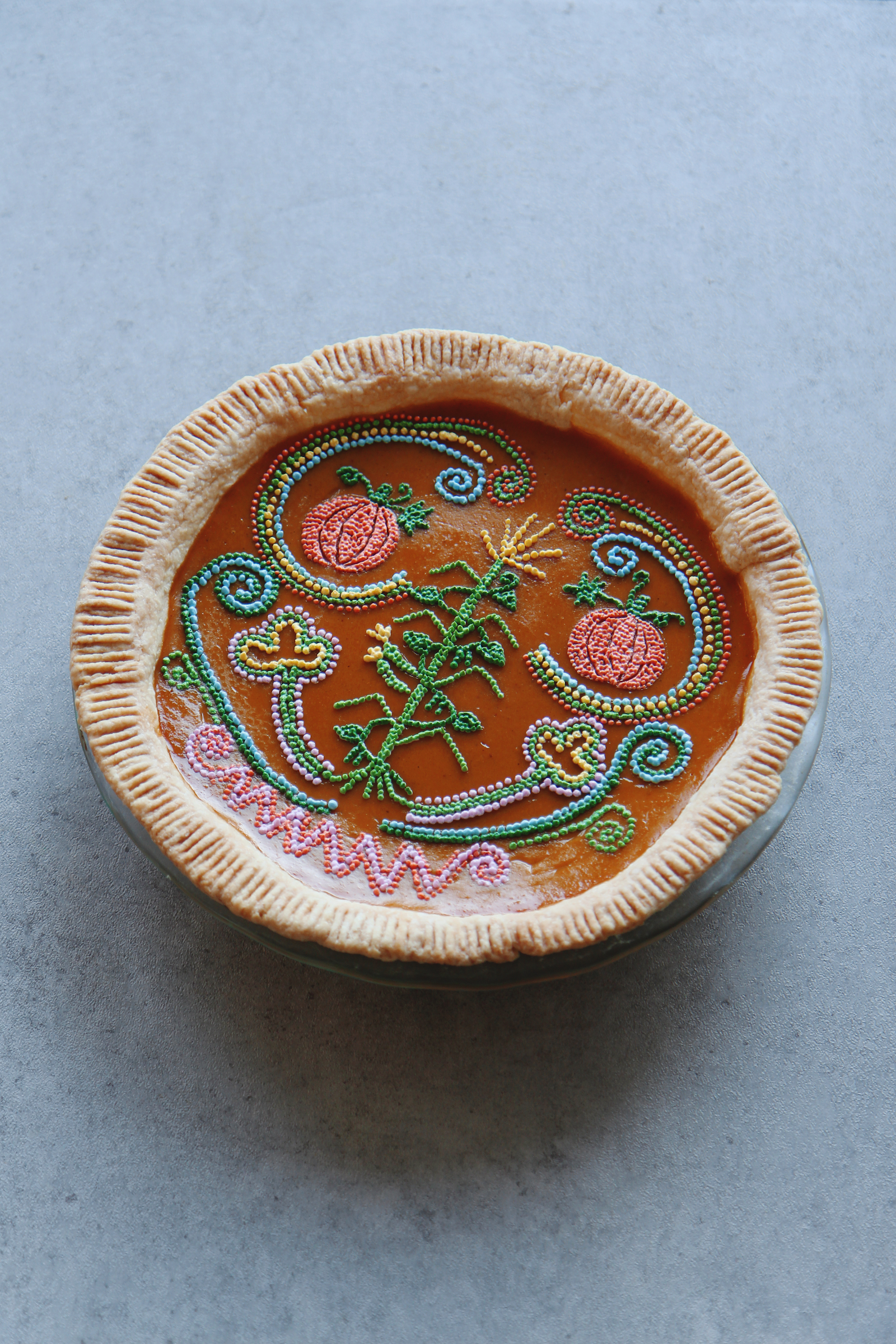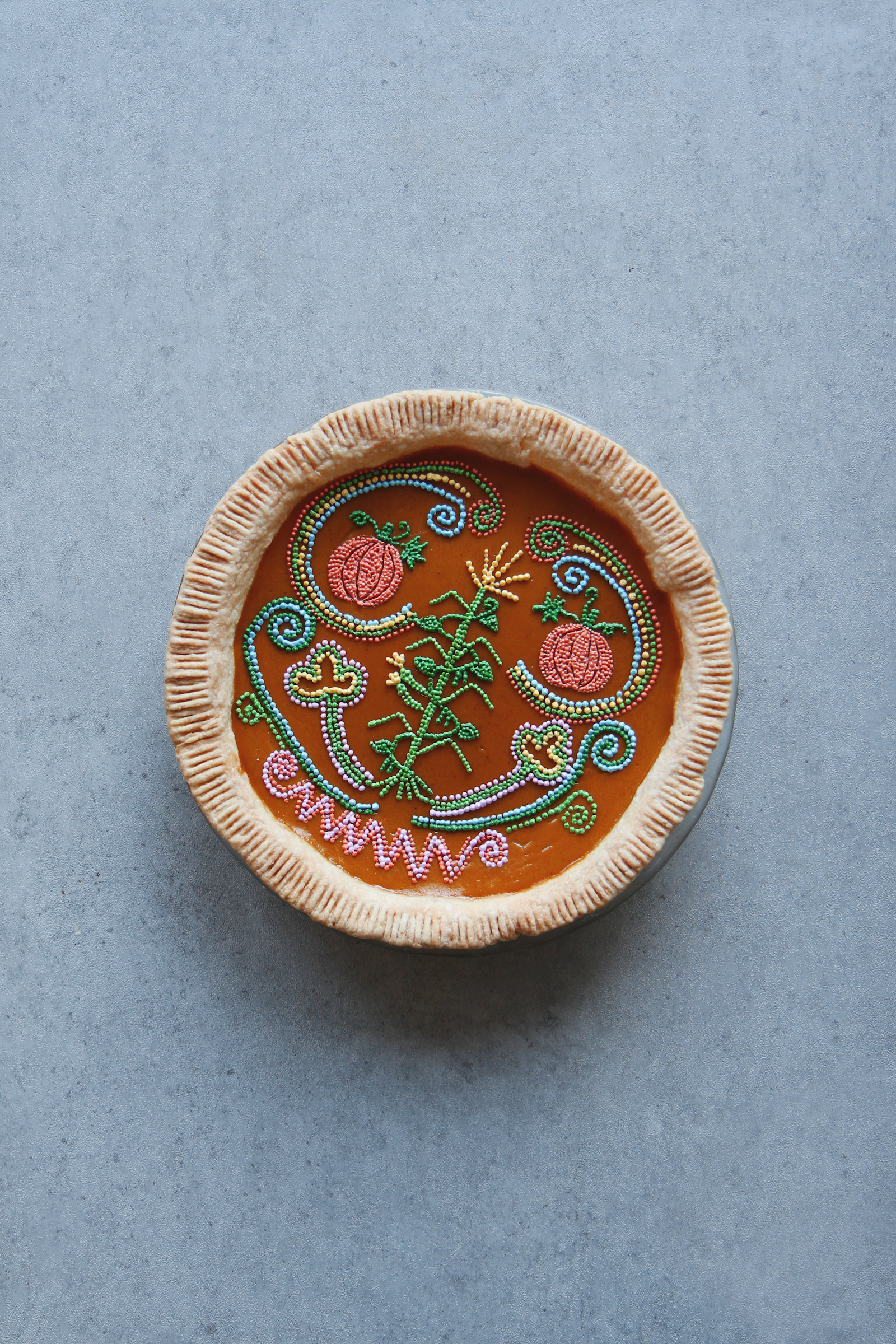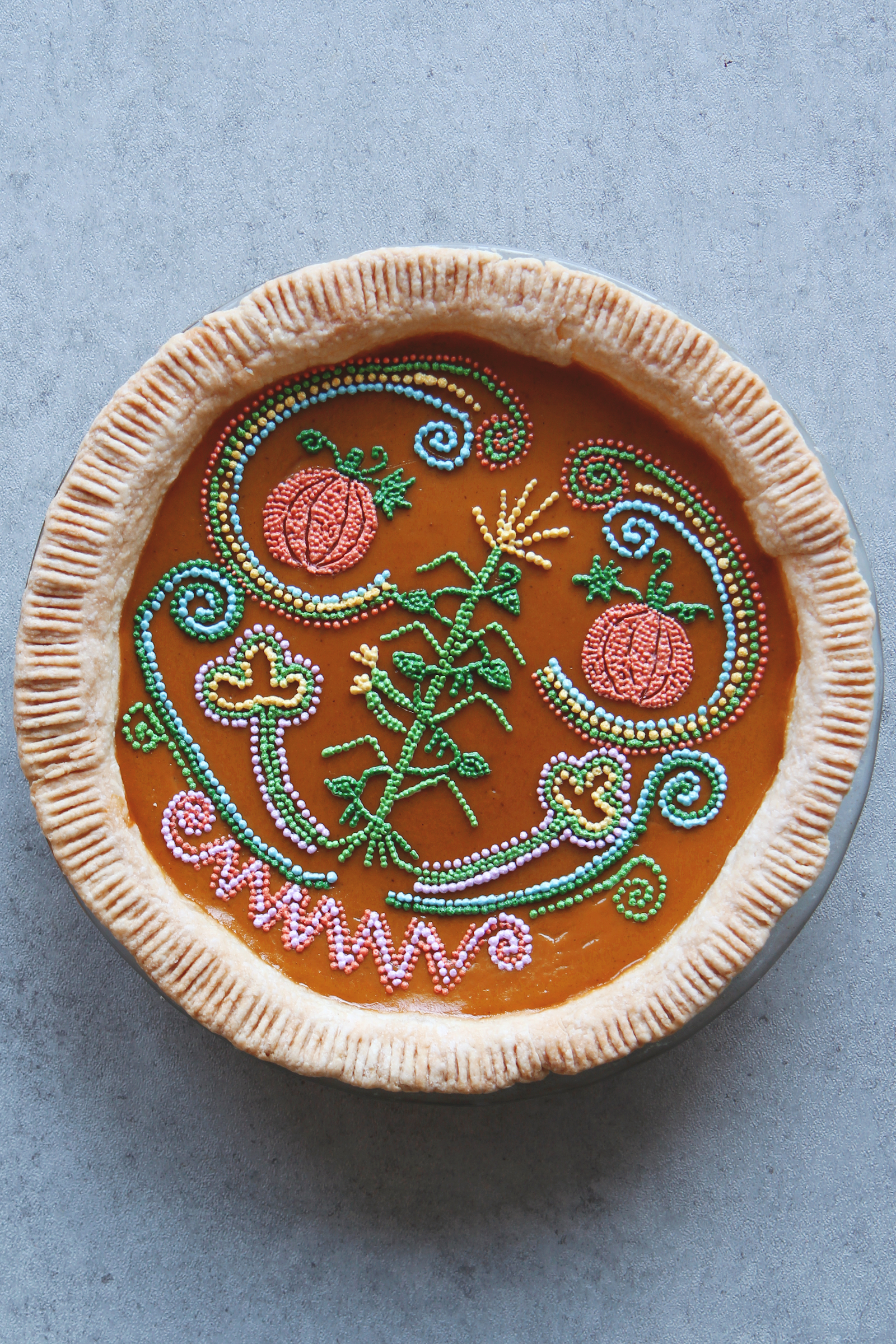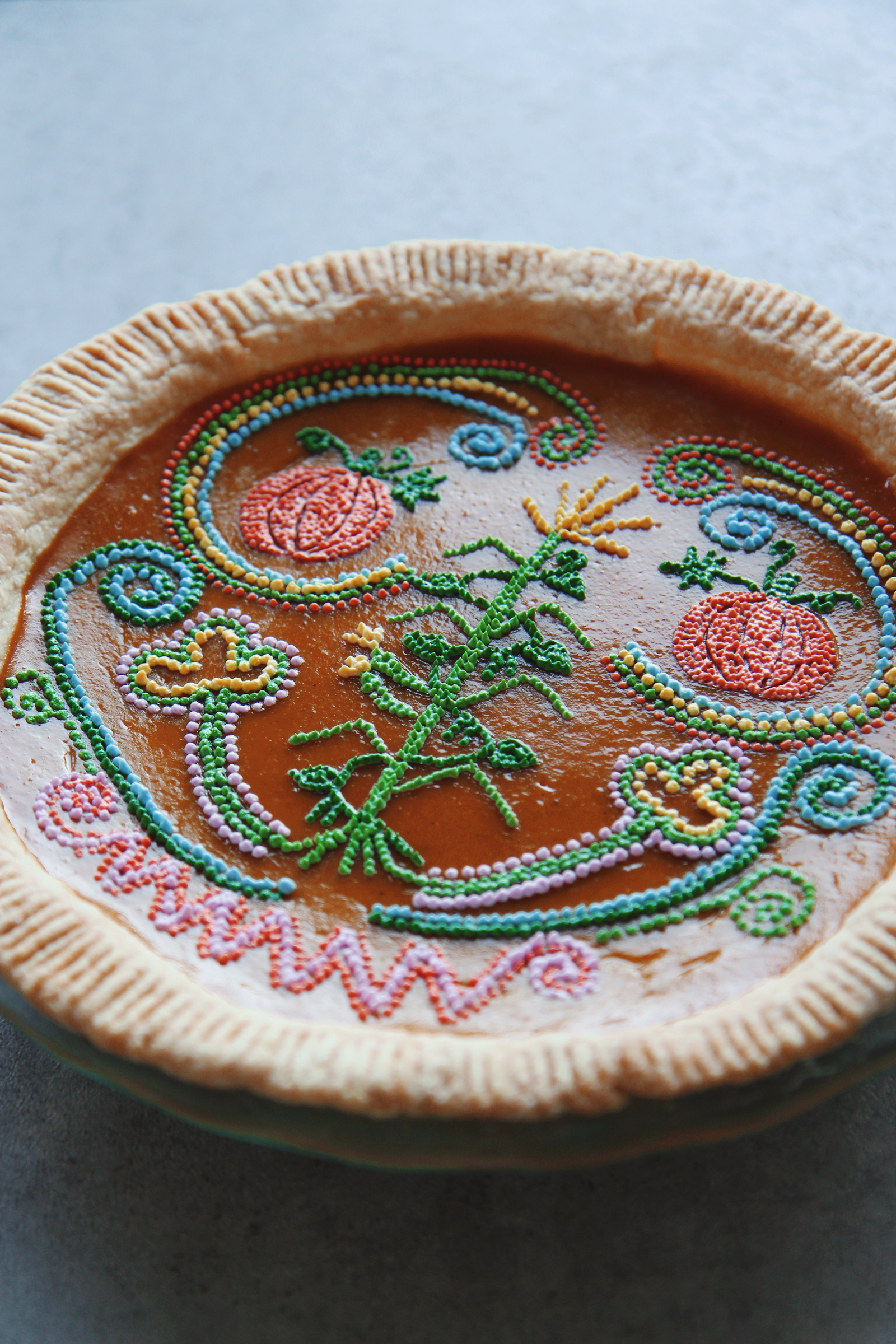Sga:d hëdwa:yë:’ ögwa’nigöë’
We gather our minds together to send greetings and thanks to the world around us. Now our minds are one.
dëyetinönyö:’
We give our thanks to
Jöhehgöh
Our Life Sustainers we harvest from the garden.
Da:h ne’hoh dih nëyögwa’nigo’dë:ök
And so let it be that way in our minds.
—Portion of the Ganö:nyög (Thanksgiving Address/Greetings to the Natural World/Words that Come Before All Else) in Onöndowa’ga:’ Gawë:nö’
Growing up on the hill-shores of Cayuga Lake, I learned in school about the people of the longhouse who were indigenous to our area, the Haudenosaunee people (and specifically the Cayuga and Seneca Nations).
We learned about the three sisters: corn, beans, and squash, which harmoniously grew together in a special mound technique. These were physical and spiritual life sustainers, important for their status as the backbone of Haudenosaunee nutrition, their role in sustainability by keeping the soil healthy, and their symbolism as part of the Creation story.
When grown together, the beans use the corn as a trellis to wind around. In turn, bean plant roots and their symbiotic bacteria and fungi help fix nitrogen and phosphorous, respectively, in the soil, providing essential fertilization. Squash leaves are broad and heavy and provide shade, decreasing water loss and preventing weeds from growing. The garden mound shape helps with drainage during times of heavy rainfall (common in the Fingerlakes).
Eaten together, the three plants provide all essential amino acids (a “complete” protein source).
This profound understanding of compatibility and balance is extraordinary. We could do well to learn from the historical practices of the Haudenosaunee as our agriculture industry continues to hurtle towards the end days of monoculture instability.
Thanksgiving was a crucial and daily practice for Haudenosaunee people, and their traditional thanksgiving address may also be called the “Words Before All Else” because they were spoken before and after nearly every social, cultural, spiritual, or political event.
More than just one harvest holiday, their tradition is that practicing perpetual gratitude for the living world is required for peace.
You can read the address, translated from Seneca (Onöndowa’ga:’ Gawë:nö’), here. Or listen to it here.
During our Thanksgiving holiday season, we too often overlook both the traditions of Native people and their abominable treatment at the hands of our government and instead give nods to sanitized history, so washed it has become flimsy fantasy, Pilgrim ret-conning, to comfort all of us who have benefited so greatly from colonization.
November is Native American History Month, and yet…
On November 11th 1794, the federal government signed the Treaty of Canandaigua, part of which recognized a 64,015 acre reservation in what are today Seneca and Cayuga Counties for the Haudenosaunee Confederacy.
This treaty was never honored. The Cayuga and Seneca Nations’ land has been systematically stolen from them. Indeed, the Haudenosaunee were forcibly scattered through New York and further, to Wisconsin, Ohio, Oklahoma, and to Canada (Ontario and Quebec) in the north.
Just 2 weeks before Thanksgiving, the Cayuga Nation marked the 228 year anniversary of this broken treaty.
On November 9th, 2022, the Supreme Court heard the arguments of Brackeen v. Haaland, a case seeking to overturn the Indian Child Welfare Act (ICWA).
ICWA protects Native children by keeping them close to their families and culture during the adoption process. It is a pillar of tribal sovereignty, allowing kids to grow up within their own culture rather than being taken out of it. It is a small but important backcurrent in the overwhelming historical flood of colonization and forced assimilation, and even as the horrors of residential schools continue to come to light, it is under attack.
The justices are deliberating on the case now. I urge you to speak about this around your Thanksgiving tables. You can learn more about the case (and why it is being funded by oil companies) here at the Lakota People’s Law Project.
This nation continues to undermine and disenfranchise indigenous people at every opportunity.
This pie design was inspired by beautiful and intricate Haudenosaunee raised beadwork. You can see examples here, here, and here.
The pie itself is a squash custard pie, silky, smooth, and lightly spiced.
You might be surprised to learn that most pumpkin pies you eat are squash pies anyways, because most canned pumpkin is Hubbard squash. Here, I’ve used a gorgeous local kabocha squash. It is roasted until fork-tender, and then blended with the secret ingredient: canned yams. They provide additional body and starch without excessive water the way squash does.
Cook it low and very slow and cool partially in the oven (another secret tip!) in order to avoid cracks.
The Italian meringue decorations I piped on top are meant to represent the three sisters.
I hope we are all able to come together as one to steep our holiday tables in gratitude. And so let it be in our minds.
Squash Pie
filling adapted from America’s Test Kitchen
ingredients:
for the pie crust:
300 grams (2 1/2 cups) flour
12 grams (1 tablespoon) sugar
1 1/2 teaspoons salt
113 grams (1 stick) cold butter
120 grams (1/2 cup) ice water
for the squash filling:
1 small kabocha squash
1 15-ounce (420 grams) can sweet yams, drained
1 1/2 teaspoons salt
1 teaspoon ground cinnamon
1 teaspoon ground ginger
1/4 teaspoon nutmeg
1/8 teaspoon cloves
1/8 teaspoon ground anise
130 grams (2/3 cup) sugar
80 grams (1/4 cup) maple syrup
240 grams (1 cup) heavy cream
240 grams (1 cup) whole milk
3 eggs
2 egg yolks
directions:
Roast the squash: Preheat oven to 375 degrees F.
Wash the kabocha well, cut in half, then destem and deseed it.
Wrap it tightly in aluminum foil and place on a baking sheet.
Bake until super tender to a fork, about an hour.
Allow to cool.
Make the crust: whisk flour, salt, and sugar together.
Cut and mix the butter into the flour mixture until the largest piece is pea-sized.
Then pulse or cut the mixture a few more times, until the butter has become crumb-like but not sticky.
Sprinkle on the ice water 1 tablespoon at a time so that you can gather the dough into a cohesive mass.
Pat dough into a disk and refrigerate for at least 30 minutes.
Roll out the disk into a 10 1/2 inch round and drape over the pie plate, crimping the edges, then refrigerate.
Preheat oven to 400 degrees F.
Prepare the filling: whisk cream, milk, and eggs together.
In a food processor, process the cooked squash and the drained yams with the sugar, maple syrup, salt, and spices.
Scrape into a large pan and cook on medium low while stirring constantly for about 15 minutes, or until the mixture is thick, glossy, and darkened.
Remove from heat and temper in the egg mixture by adding a small amount of the egg mixture into the squash while stirring constantly and vigorously.
Add in the remaining egg/cream mixture and whisk until the filling is completely smooth.
It will not be a super thick filling—it is pourable.
Place the prepared pie pan into the oven with pie weights in it. Parbake for 10 minutes.
Remove the pie pan from the oven, pour in the filling, and carefully return to the oven.
Bake for 10 minutes at 400 degrees F, then decrease the heat to 300 degrees F and bake until the pie barely jiggles in the very center but is solid, around 50-55 minutes.
Turn the oven off and crack the door open—allow the pie to cool for at least 30 minutes inside the oven.
Transfer to a wire rack and allow to cool until fully set (can take a few hours).
Decorate as desired (I used Italian meringue)!






March 14, 2023 at 1:06 pm
[…] previously: 2022: squash pie 2018: plum and frangipane pie 2017: perfect peach pie 2016: pumpkin meringue tart 2015: apple, […]
March 15, 2024 at 12:15 am
[…] previously: 2023: squash pie 2018: plum and frangipane pie 2017: perfect peach pie 2016: pumpkin meringue tart 2015: apple, […]